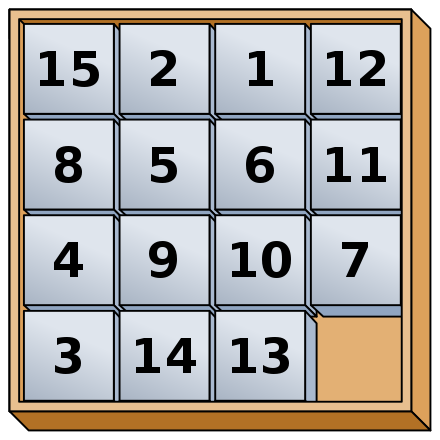Heuristic functions for A* need to have two properties
In the context of \(A^*\) search, being an underestimate is also known as being "admissible."
Heuristics are usually created by simplifying ("relaxing") the task, i.e. removing some constraints. For search in mazes/maps, we can use straight line distance, so ignoring
All other things being equal, an admissible heuristic will work better if it is closer to the true cost, i.e. larger. A heuristic function h is said to "dominate" a heuristic function with lower values.
For example, suppose that we're searching a digitized maze and the robot can only move in left-right or up-down (not diagonally). Then Manhattan distance is a better heuristic than straight line distance. The Manhattan distance between two points is the difference in their x coordinates plus the difference in their y coordinates. If the robot is allowed to move diagonally, we can't use Manhattan distance because it can overestimate the distance to the goal.
Another classical example for \(A^*\) is the 15-puzzle. A smaller variant of this is the 8-puzzle..

Two simple heuristics for the 15-puzzle are
See 8/15-puzzle demo by Julien Dramaix
Admissibility guarantees that the output solution is optimal. Here's a sketch of the proof:
Search stops when goal state becomes top option in frontier (not when goal is first discovered). Suppose we have found goal with path P and cost C. Consider a partial path X in the frontier. Its estimated cost must be \(\ge C\). Since our heuristic is admissible, the true cost of extending X to reach the goal must also be \( \ge C\). So extending X can't give us a better path than P.
\(A^*\) decays gracefully if admissibility is relaxed. If the heuristic only slightly overestimates the distance, then the return path should be close to optimal. This is called "suboptimal" search. Non-admissible heuristics are particularly useful when there are many alternate paths of similar (or even the same) cost, as in a very open maze. The heuristic is adjusted slightly to create a small preference for certain of these similar paths, so that search focuses on extending the preferred paths all the way out to the goal. See Amit Patel's notes for details.
In some search problems, notably speech recognition, the frontier can get extremely large. "Beam search" algorithms prune states with high values of f. Like suboptimal search, this sabotages guarantees of optimality. However, in practice, it may be extremely unlikely that these poorly-rated states can be extended to a good solution.